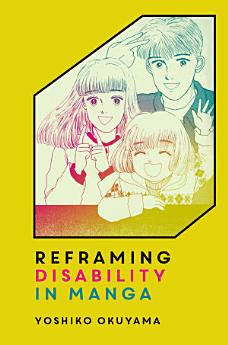Reframing Disability in Manga
মে’ ২০২০ · University of Hawaii Press
৫.০star
১ টা পৰ্যালোচনাreport
ইবুক
238
পৃষ্ঠা
family_home
যোগ্য
info
reportমূল্যাংকন আৰু পৰ্যালোচনা সত্যাপন কৰা হোৱা নাই অধিক জানক
এই ইবুকখনৰ বিষয়ে
Reframing Disability in Manga analyzes popular Japanese manga published from the 1990s to the present that portray the everyday lives of adults and children with disabilities in an ableist society. It focuses on five representative conditions currently classified as shōgai (disabilities) in Japan—deafness, blindness, paraplegia, autism, and gender identity disorder—and explores the complexities and sociocultural issues surrounding each. Author Yoshiko Okuyama begins by looking at preindustrial understandings of difference in Japanese myths and legends before moving on to an overview of contemporary representations of disability in popular culture, uncovering sociohistorical attitudes toward the physically, neurologically, or intellectually marked Other. She critiques how characters with disabilities have been represented in mass media, which has reinforced ableism in society and negatively influenced our understanding of human diversity in the past.
Okuyama then presents fifteen case studies, each centered on a manga or manga series, that showcase how careful depictions of such characters as differently abled, rather than disabled or impaired, can influence cultural constructions of shōgai and promote social change. Informed by numerous interviews with manga authors and disability activists, Okuyama reveals positive messages of diversity embedded in manga and argues that greater awareness of disability in Japan in the last two decades is due in part to the popularity of these works, the accessibility of the medium, and the authentic stories they tell.
Scholars and students in disability studies will find this book an invaluable resource as well as those with interests in Japanese cultural and media studies in general and manga and queer narrative and anti-normative discourse in Japan in particular.
Okuyama then presents fifteen case studies, each centered on a manga or manga series, that showcase how careful depictions of such characters as differently abled, rather than disabled or impaired, can influence cultural constructions of shōgai and promote social change. Informed by numerous interviews with manga authors and disability activists, Okuyama reveals positive messages of diversity embedded in manga and argues that greater awareness of disability in Japan in the last two decades is due in part to the popularity of these works, the accessibility of the medium, and the authentic stories they tell.
Scholars and students in disability studies will find this book an invaluable resource as well as those with interests in Japanese cultural and media studies in general and manga and queer narrative and anti-normative discourse in Japan in particular.
মূল্যাংকন আৰু পৰ্যালোচনাসমূহ
৫.০
১ টা পৰ্যালোচনা
লিখকৰ বিষয়ে
Yoshiko Okuyama is professor in the Department of Languages at the University of Hawai‘i at Hilo.
এই ইবুকখনক মূল্যাংকন কৰক
আমাক আপোনাৰ মতামত জনাওক।
পঢ়াৰ নির্দেশাৱলী
স্মাৰ্টফ’ন আৰু টেবলেট
Android আৰু iPad/iPhoneৰ বাবে Google Play Books এপটো ইনষ্টল কৰক। ই স্বয়ংক্রিয়ভাৱে আপোনাৰ একাউণ্টৰ সৈতে ছিংক হয় আৰু আপুনি য'তে নাথাকক ত'তেই কোনো অডিঅ'বুক অনলাইন বা অফলাইনত শুনিবলৈ সুবিধা দিয়ে।
লেপটপ আৰু কম্পিউটাৰ
আপুনি কম্পিউটাৰৰ ৱেব ব্রাউজাৰ ব্যৱহাৰ কৰি Google Playত কিনা অডিঅ'বুকসমূহ শুনিব পাৰে।
ই-ৰীডাৰ আৰু অন্য ডিভাইচ
Kobo eReadersৰ দৰে ই-চিয়াঁহীৰ ডিভাইচসমূহত পঢ়িবলৈ, আপুনি এটা ফাইল ডাউনল’ড কৰি সেইটো আপোনাৰ ডিভাইচলৈ স্থানান্তৰণ কৰিব লাগিব। সমৰ্থিত ই-ৰিডাৰলৈ ফাইলটো কেনেকৈ স্থানান্তৰ কৰিব জানিবলৈ সহায় কেন্দ্ৰত থকা সবিশেষ নিৰ্দেশাৱলী চাওক।


